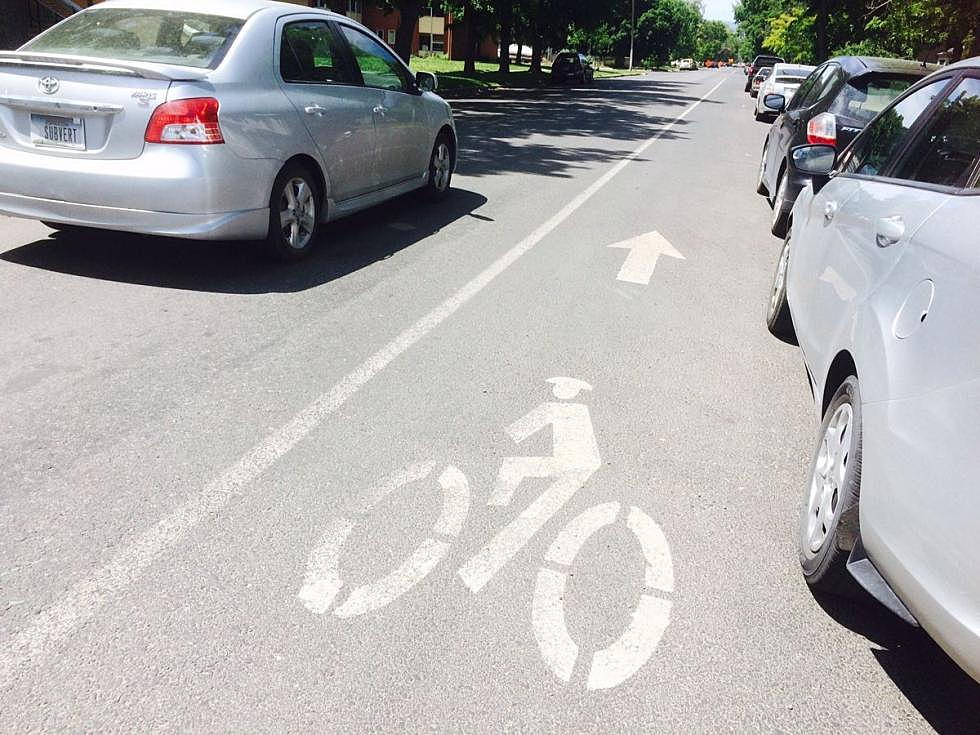
Exemptions from Complete Streets, road diets raise questions on neighborhood requests
It was two weeks ago when a South Hills neighborhood won an exemption from a city policy saying streets should be designed to accommodate all modes of transportation, from cars to bicycles and those who choose to walk.
Now, residents in the same area are seeking two additional street exemptions, raising questions over how much say a single neighborhood should have in straying from city-wide policies intended to create a fluid and interconnected transportation system.
“It's a good question and it's one we'll have to talk about,” said Ward 6 council member Marilyn Marler. “Whenever we have these policies, we have to see how they fit and make adjustments. We have to keep talking about it.”
Like Linda Vista, other neighborhoods are expected to make their own transportation requests, including the Riverfront Neighborhood, where residents have asked the city to reduce Fifth and Sixth streets to a single lane of traffic between Higgins Avenue and Russell Street.
That debate is expected to be contentious and it began to take shape two weeks ago when Ward 5 council member Julie Armstrong pushed to eliminate bike lanes on Linda Vista at the request of the neighborhood.
“If we're not listening to our constituents, I don't know what our job is here,” Armstrong said during the August discussion. Ward 2 council member Jordan Hess responded by urging Armstrong to keep her argument handy when the Riverfront Neighborhood asks the city to cut Fifth and Sixth to a single lane, which it's expected to do in the weeks ahead.
While Armstrong didn't return calls for comment Monday, Hess said it's a balancing act when trying to accommodate the requests of a neighborhood against the good of the larger community. It offers no easy solutions, he said, and it often plays out on a case-by-case scenario.
“I think we need to remember that we set policy through an extensive public planning process,” Hess said. “Missoula has a great tradition of really active neighborhoods and strong neighborhood identity and involvement. We have to balance that community-wide policy with what the neighborhoods are asking for.”
While the Riverfront Neighborhood's request for a lane reduction has not yet landed on the City Council's schedule, two new street exemptions requested by the Linda Vista Neighborhood have.
A developer there is asking the city to exempt a portion of Shaver Drive from the city's Complete Streets policy. He has the backing of the Upper Linda Vista Homeowner's Association, which is also seeking an exemption to both Shaver and Christian drive.
Supporters of the request want the streets painted like Linda Vista Boulevard without dedicated bike lanes and parking on both sides of the street. But that runs contrary to the city's Complete Streets plan and it has some policy advocates concerned.
“If there continues to be exemptions based on neighborhood complaints or exceptions, it defeats the whole purpose of having a complete streets policy for the city,” said Bob Watchel, chair of city's Bicycle and Pedestrian Advisory Board. “There needs to be a specific reason and rationale to override the prevailing safety concerns. There needs to be some specific guidelines with respect to the exceptions.”
The city adopted the policy in 2009 to “increase the usability of all streets for all modes of travel” and for “citizens of all ages and abilities.” At the time of adoption, Missoula was one of 37 municipalities to adopt a Complete Streets plan.
Earlier this year, the National Complete Streets Coalition gave Missoula a score of 100 percent, one of only four cities to achieve a perfect rating. Hess agreed with Watchel in that issuing exemptions shouldn't become the norm.
“Exemptions to the policy should be uncommon – they should be based on a specific set of circumstances that make sense for us to go against policy,” Hess said. “We have to use our polity documents as the guiding principles. Any deviation from the policy needs to be justified.”
As neighborhood requests to deviate from the Complete Streets policy continue to come in, other traffic-related debates are expected to take shape in the coming months, including the reduction of Fifth and Sixth streets.
The City Council added $20,000 to its budget in 2015 to complete the study and contracted Alta Planning and Design to do the work. Hess has suggested the issue will come before the council in the coming weeks.
The Missoula Institute for Sustainable Transportation also has submitted a request to reduce Higgins, Russell, Orange and Broadway to two lanes of traffic to better accommodate bicyclists.
But those issues are still working their way through various channels and have yet to face the rigors of public debate. Exemptions to the city's Complete Streets policy, however, have become regular on recent agenda items.
“Sentiment is important, but it has to fit in the community and it has to advance our transportation objectives,” Hess said. “I think it's an important discussion to have in a theoretical sense. We pass policies for a reason and I think most of us would agree we need to have guiding principles.”
For now, the requests have been restricted to a single neighborhood and have not placed the Complete Streets policy at risk, according to Ben Wiess, the city's bicycle pedestrian program manager.
“In my mind, it doesn't undermine the whole policy,” he said. “It's probably a good thing to see it challenged in certain ways to see where there's flexibility in it and where it breaks. If a neighborhood isn't ready and has some of the challenges a neighborhood like (Linda Vista) has, that's up to the council to decide.”
